When choosing wallpaper for the living room, you must first take into account which room you plan to decorate. Lighting conditions, the size and shape of the room play a decisive role, because color, saturation, and also the pattern of wall coverings can significantly change the perception of the interior.
Living room: types of wallpaper
The history of this type of decoration began in China, around the third millennium BC - rice paper began to be glued to the walls. Modern wallpaper for the living room can be either traditional, paper-based, or washable, based on other materials. According to the base material, they are divided into:
- Paper;
- Vinyl;
- Acrylic
- Fiberglass;
- Metallized;
- Liquid;
- Natural (textile, bamboo, leather and others).
Each type of wallpaper has its own advantages and disadvantages. Let's consider them in more detail.
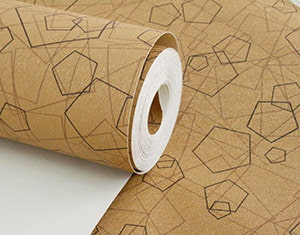
Paper
Classic wallpaper for the living room is made on a paper basis. They are not moisture resistant - but in the living room this is usually not required. Maintenance of such a coating is simple - they must be cleaned with a vacuum cleaner from time to time. A variety of colors and patterns allows you to choose the right design for any interior, whether it be classic or modern style. The paper may have a different texture, color, be smooth, structural or embossed.
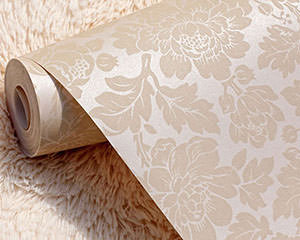
Vinyl
With the help of polymer fibers, interesting designs are created. Vinyl coatings on a non-woven basis have a leveling effect and work as an additional heat and sound insulating layer. The design of wallpaper for the living room with silk-screen printing is suitable for classic styles. Silk yarn vinyl used for the top coat allows you to create impressive contemporary wallpaper designs for living rooms.
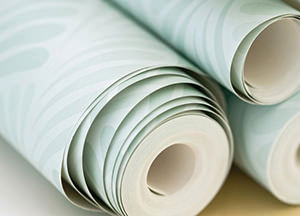
Acrylic
You have a paper base on which the polymer is applied by the spot method. This gives them a definite advantage over vinyl, as it facilitates air exchange. However, they are less resistant to water and their service life is much shorter. The paper base is not able to mask the defects of the wall, and the design possibilities are very limited, so this type of coating is not widespread.

Fiberglass
Wallpaper for walls in the living room made of fiberglass has its advantages: they are very durable and durable, “breathe” well, they can be washed. However, the minuses are obvious: there is only one option of finishing - painting, and you can repaint a limited number of times, since the paint gradually hides the relief, worsening the decorative properties. The high cost and complexity of dismantling also do not contribute to the popularity of this coating.

Metallic Wallpaper
Able to emphasize the design in the style of hi-tech or techno. Some options are suitable for classic styles. The base is non-woven, on which aluminum foil is applied on top with a thin layer. The foil is stamped or patterned, usually for metal: gold, silver, platinum, bronze. The foil has heat-insulating properties, is resistant to moisture, does not fade, does not undergo wear for a long time.
Liquid wallpaper

The composition of this finishing material includes cellulose as a base, silk fibers, dyes, decorative components (mica, mother of pearl, various minerals in crumbs, spangles, gold and silver threads), as well as substances that protect against mold, rot and binders. In appearance, they resemble plaster, are supplied dry and are diluted with water before use.

Natural
Wallpaper can be made of fabric, bamboo or jute fibers, leather plates. Natural coatings are also called coatings made of natural fibers applied to non-woven fabric. Real dry plants can be woven into these coatings. Original interior design is not the only advantage of this coating. Natural wallpapers have heat-insulating properties, do not fade, are environmentally friendly.
Wallpaper color for living room
Using the color of wall coverings and its saturation, you can create various interior effects - for example, highlight functional areas, “raise” low ceilings, “push” walls, “lighten” a room, or, conversely, create an intimate atmosphere. In the design of the premises, this technique is widely used.
Bright wallpaper in the living room
They will give it a grand appearance, add light, especially in those cases when the windows face the north side. Gradual, gradient dimming from top to bottom will create the illusion of high ceilings. The traditional design of the living rooms is the decoration of the lower, faster soiled part of the walls, in dark, and the upper - in light tones.
Dark wallpaper in the living room
more often used to highlight one or another part of the wall - for example, in the fireplace area. The color scheme is selected in accordance with the chosen style of room design and personal tastes of the customer, while there are several general rules that must be followed to create a comfortable interior:
- Too bright and “acidic” tones should be avoided, especially in large areas;
- In rooms with a lack of natural lighting, do not paste the walls with wallpaper of dark, saturated tones;
- In small living rooms it is better to use one tone for the walls, and it should be light.
Combining wallpaper in the living room
The room reserved for the living room may have an irregular shape, or too low ceilings. A very large room is also not always good: in it a person will not feel too comfortable. These and some other shortcomings can be corrected with a combination of wall coverings of different colors, patterns and textures.
Geometry
Highlighting one of the walls with photo wallpaper, or wallpaper with a contrasting tone, you can partially correct the geometry of space. Using the combined wallpaper in the living room in the vertical direction, visually “raise” the ceilings, in the horizontal - “expand” the walls.
Zoning
Various color combinations of wallpaper in the living room are used to divide the space into functional areas - a fireplace, a reading area, a TV viewing area and others. The same technique helps to highlight the living room in open-plan layouts.
Wallpaper - decorative element
Both two colors in the living room can be used to create an original wall decor from wallpaper with a picture or pattern. For example, all the walls are light, and several sections are dark with a pattern; they can be framed using a wooden, metal or plastic plank.
Wallpaper in the living room: photo of the interiors
The photo below shows examples of the use of modern wallpaper in the interior of a living room.
Photo 1. Gray wallpapers in the living room interior highlight the fireplace and TV area.
Photo 2. Wallpaper in the living room in two colors gives graphic to the interior and divide it into functional zones: fireplace and sofa.
Photo 3. White wallpaper in the living room, combined with dark elements - furniture and flooring - give the interior a graphic feel.
Photo 4. Traditional design with light wallpaper with floral patterns.
Photo 5. The design of the living room with wallpaper “brick-like” distinguishes a sofa zone in a modern interior design.
Photo 6. The combination in the living room of light-colored wallpaper with an unobtrusive pattern and dark furniture gives expressiveness to the interior.
Photo 7. An interesting idea for living room wallpapers in eco style design.
Photo 8. Beautiful wallpapers for the living room in pink colors create a romantic interior.

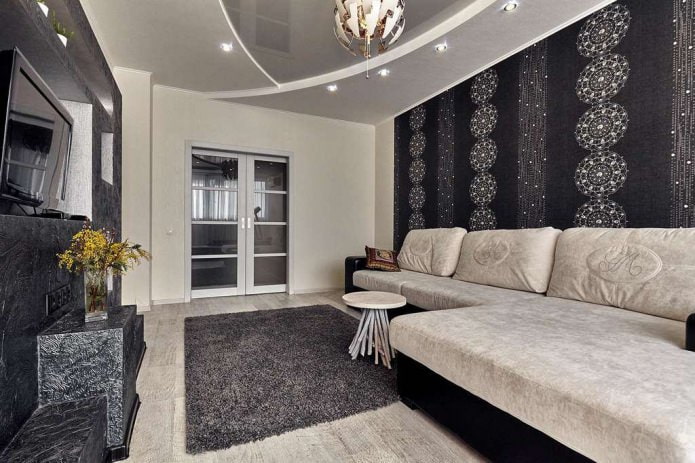

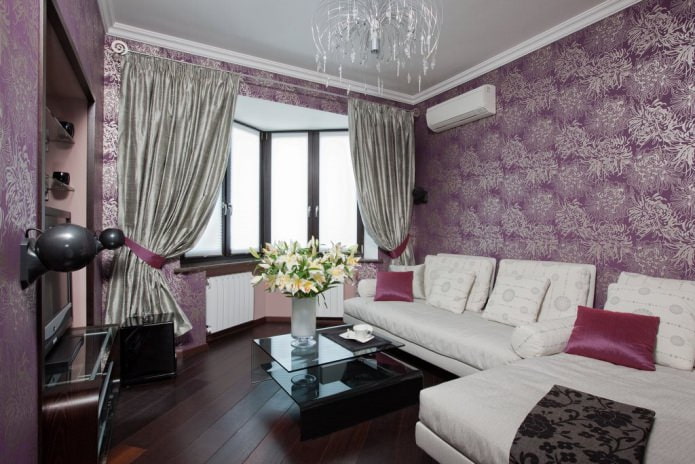
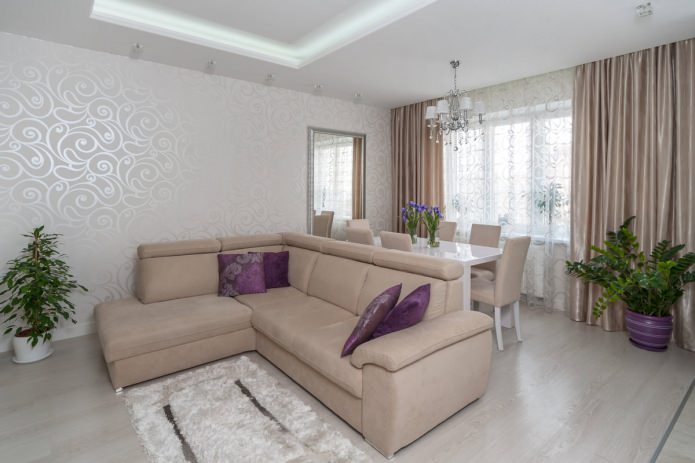


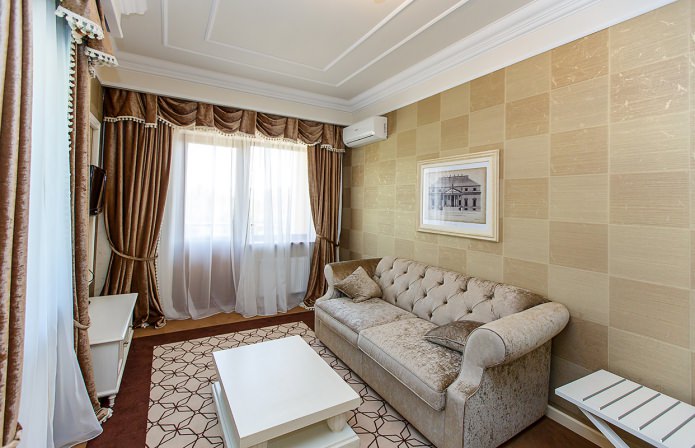
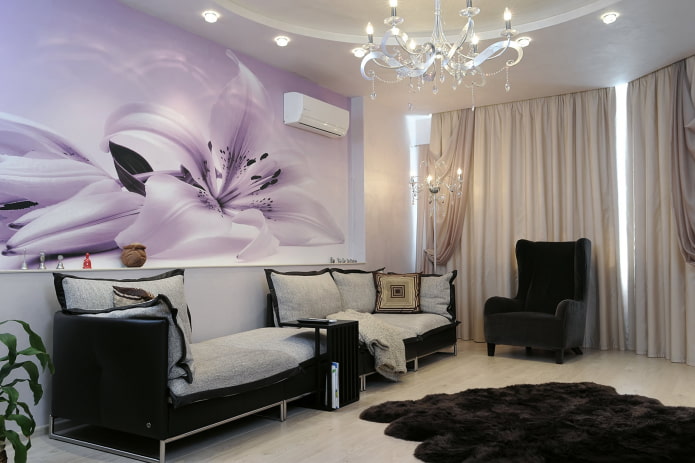
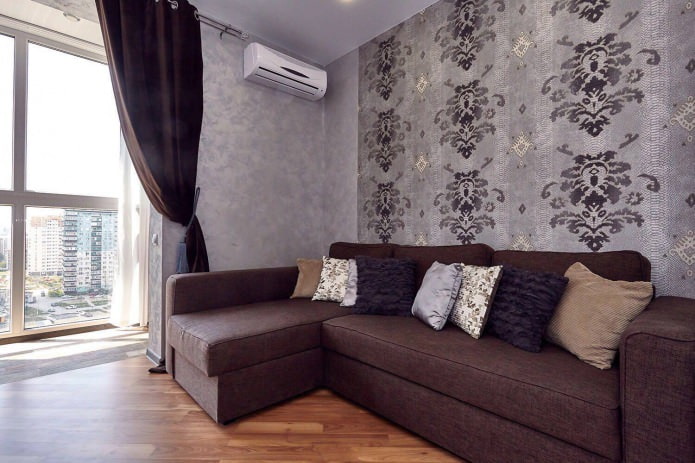
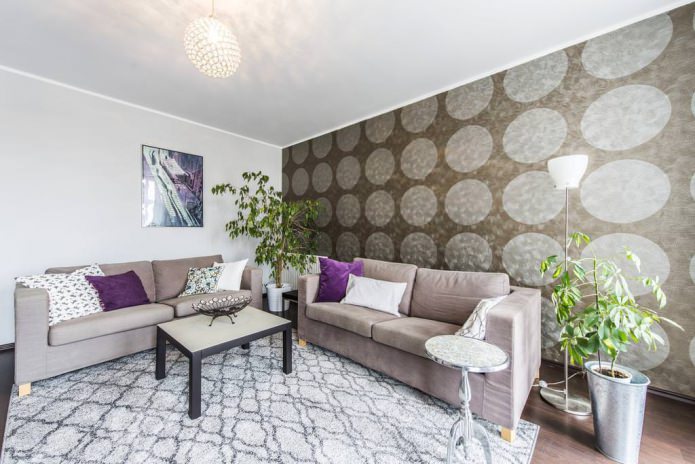
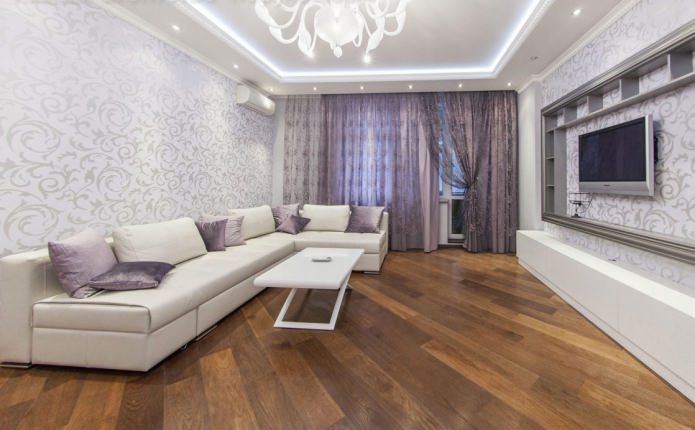
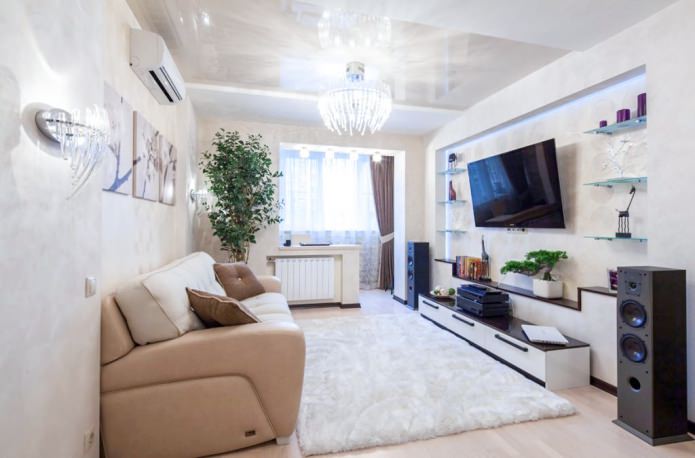
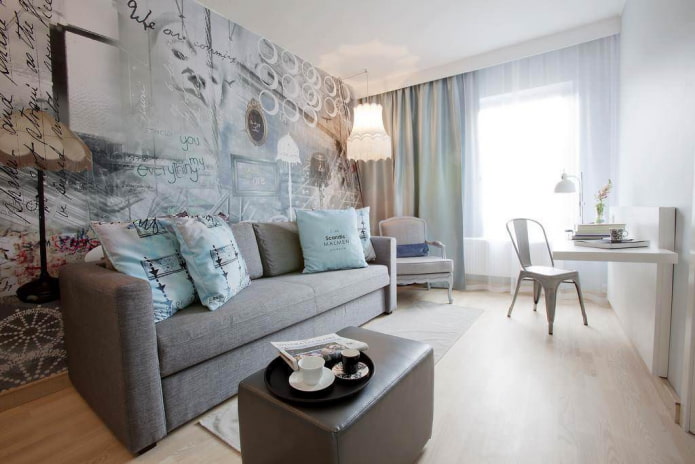
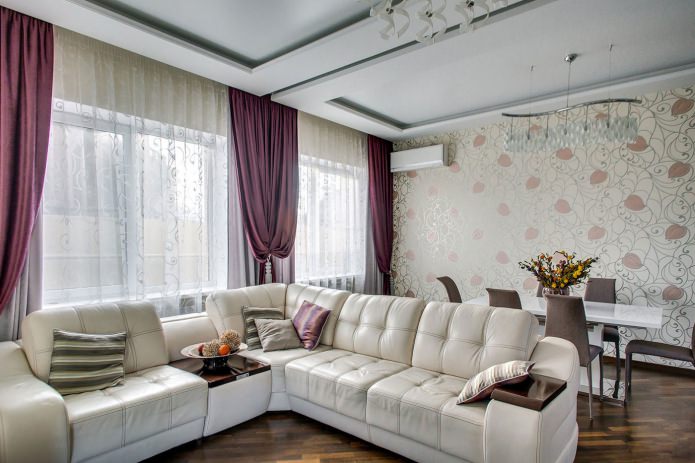
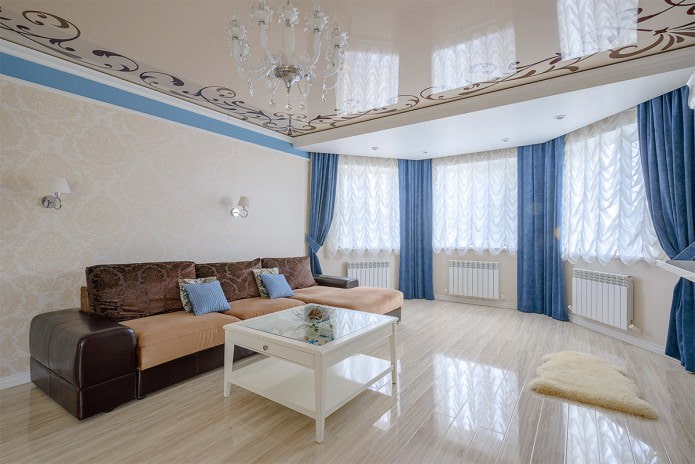
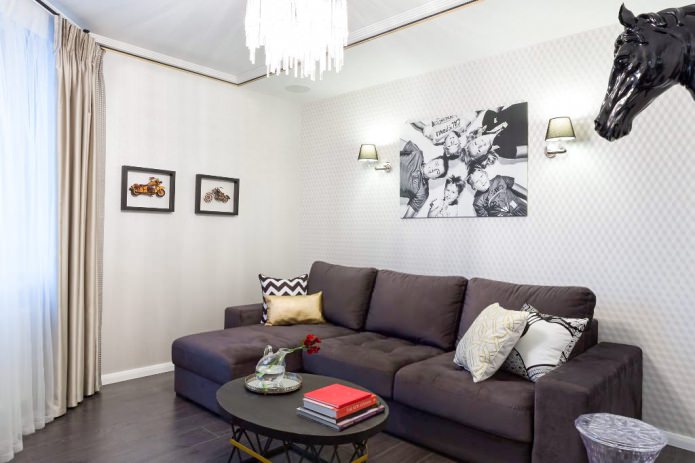

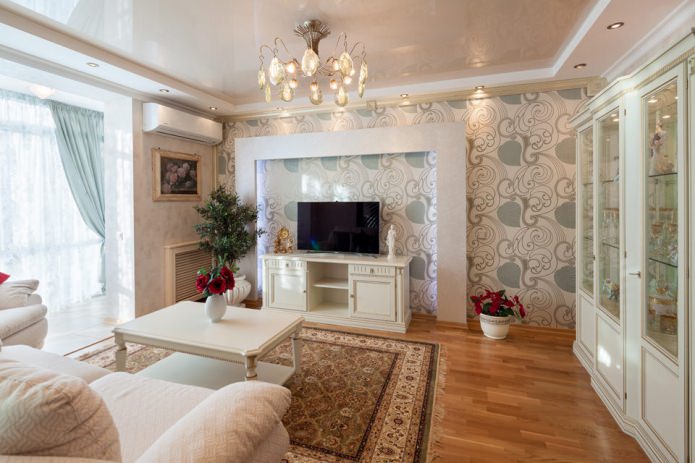
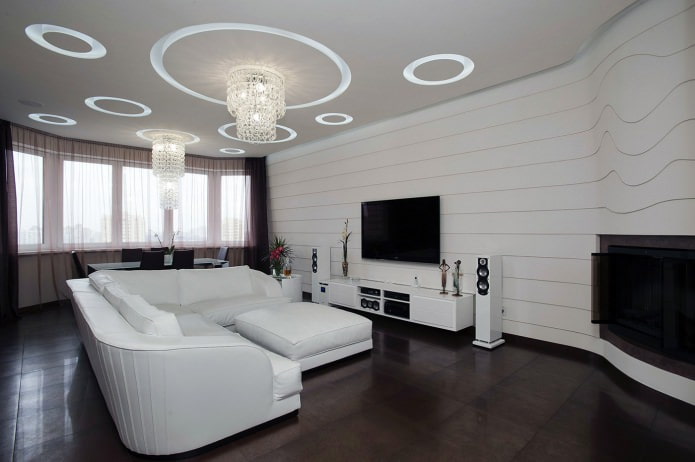
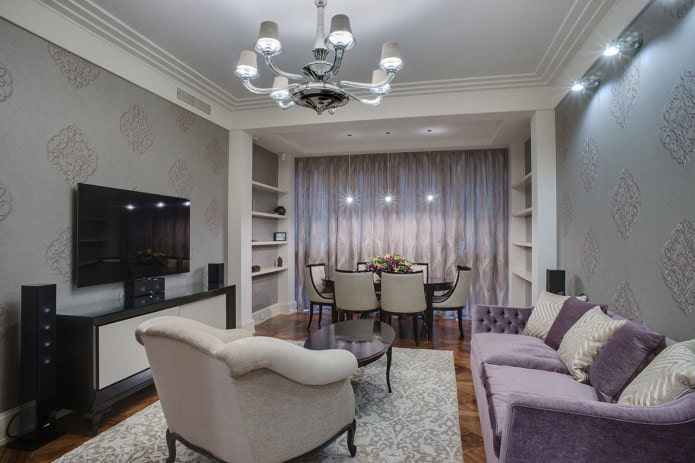

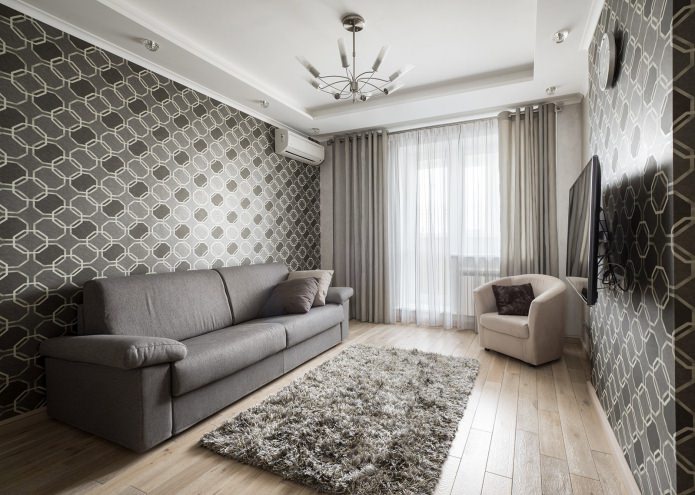
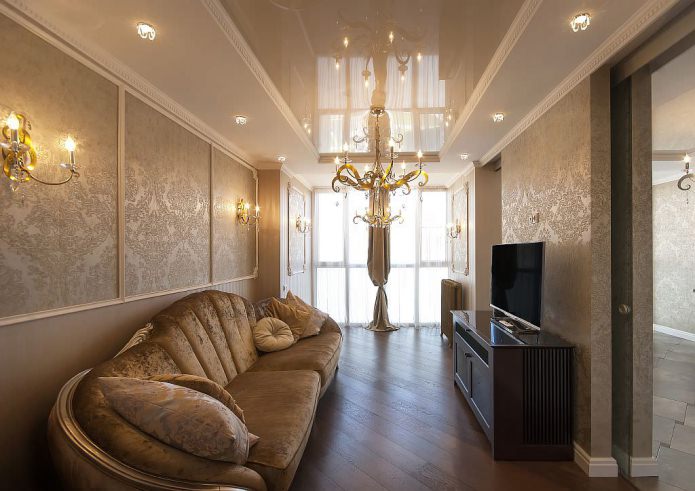
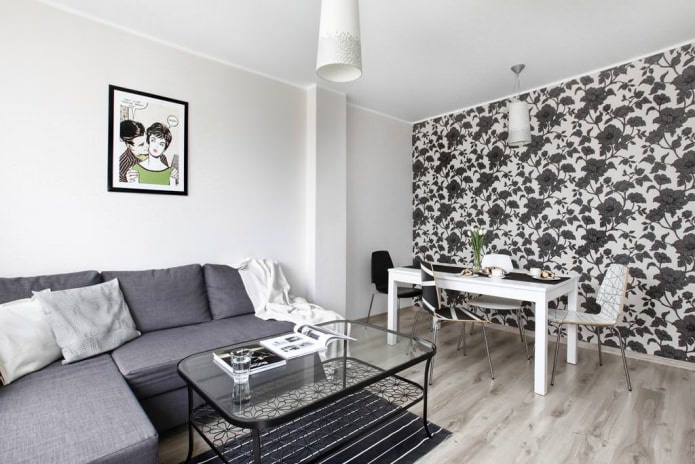
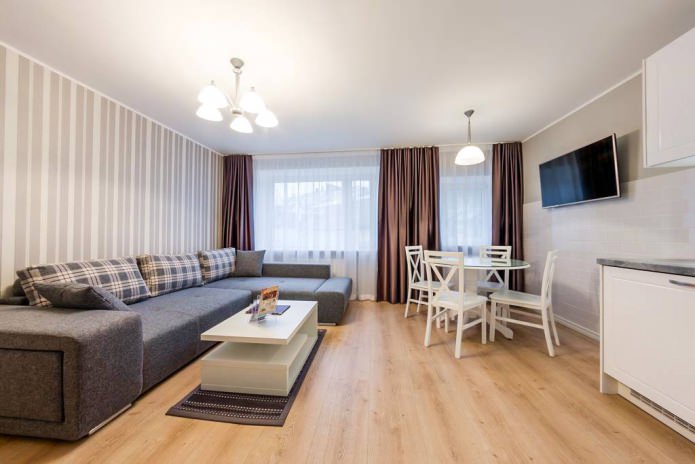

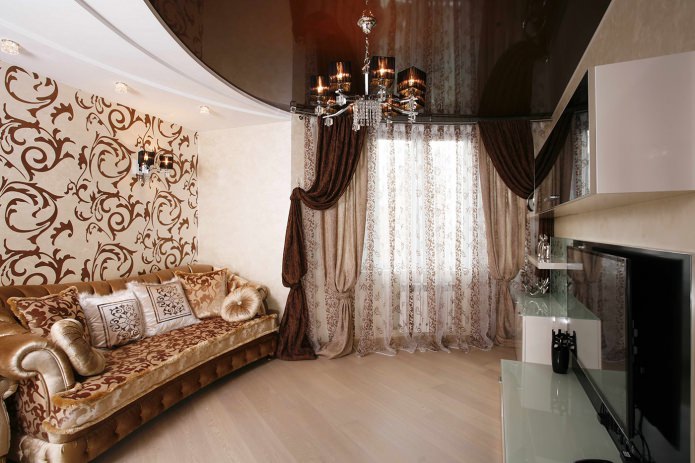

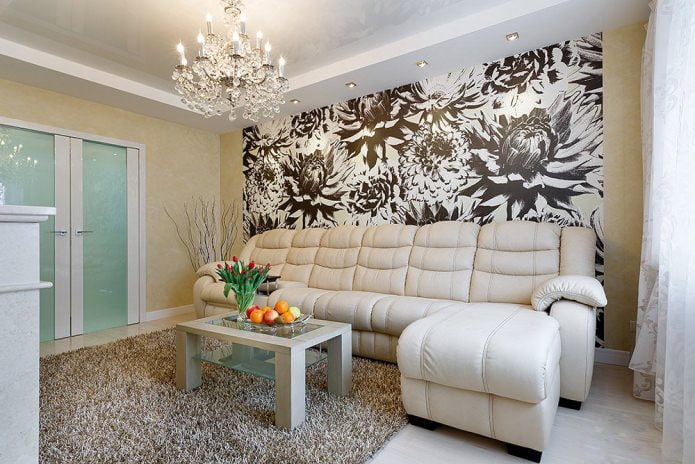
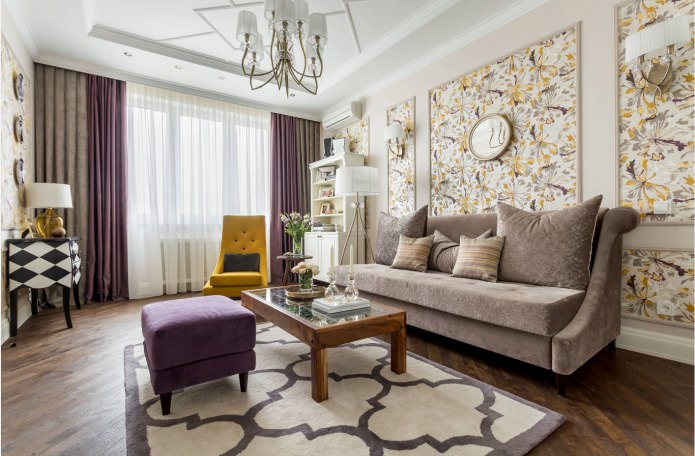
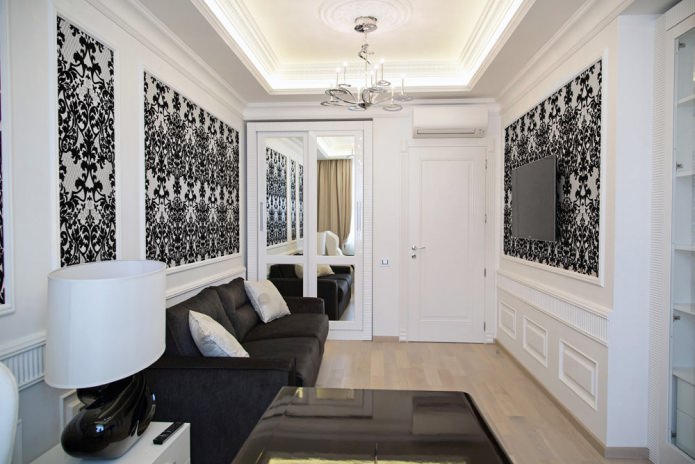
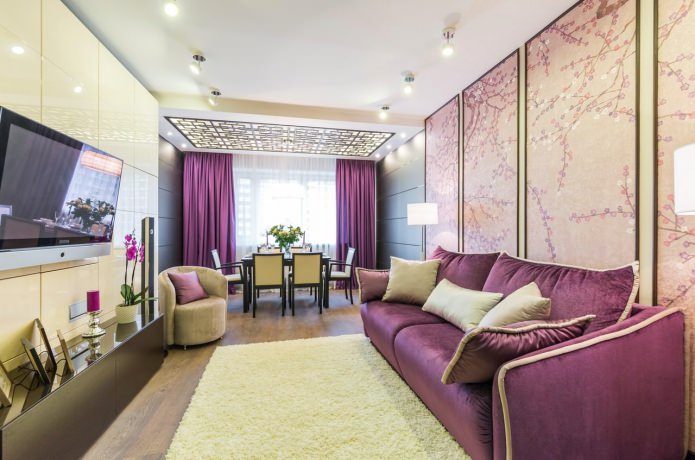
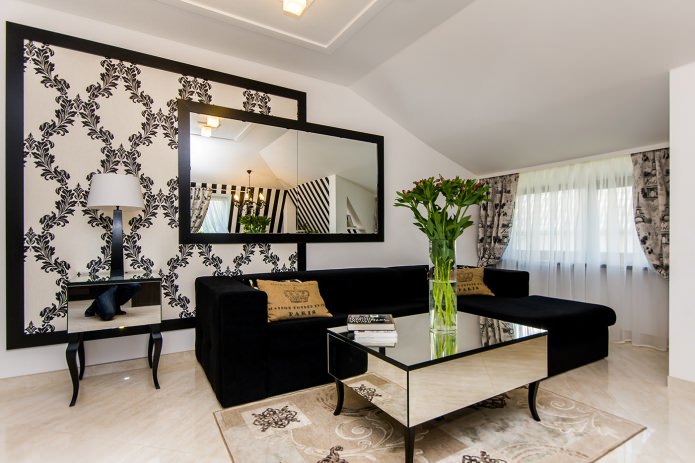
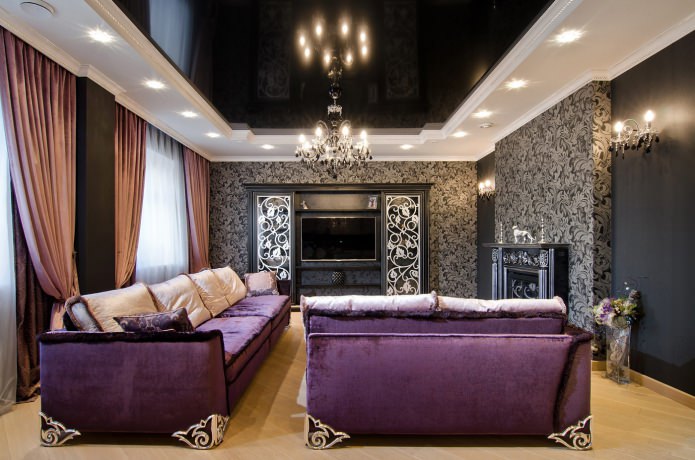
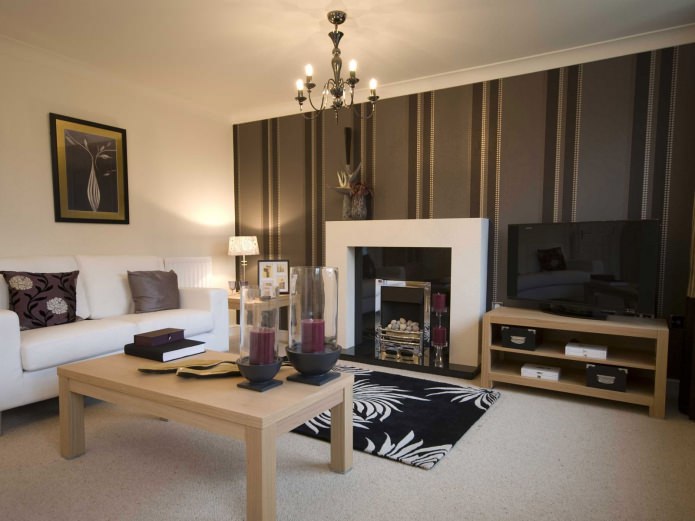
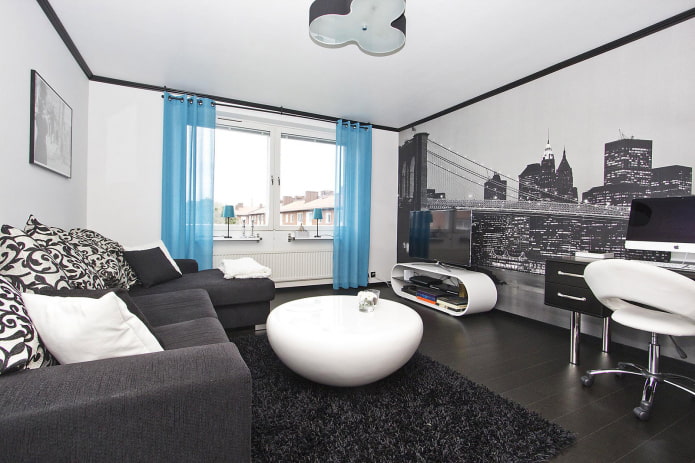
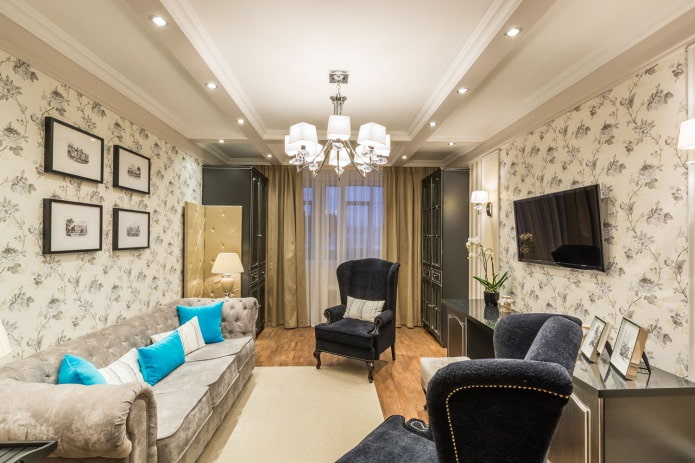
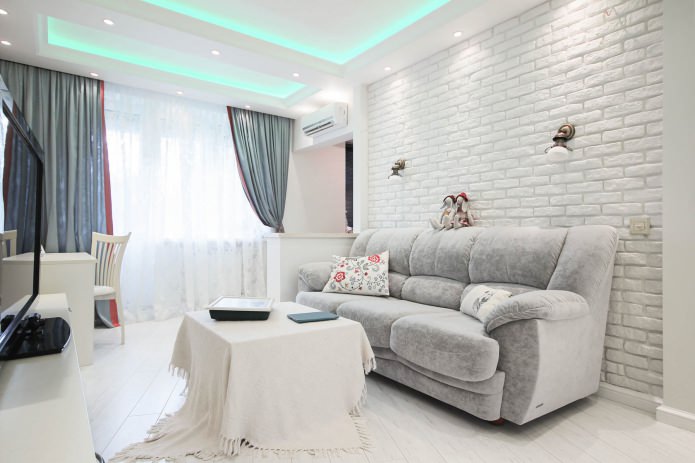

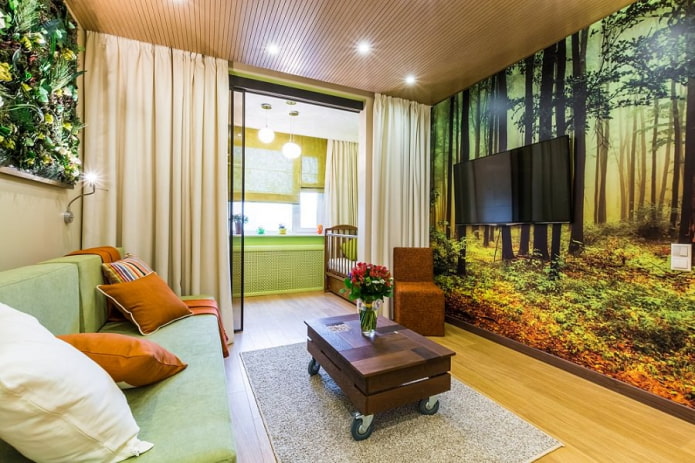

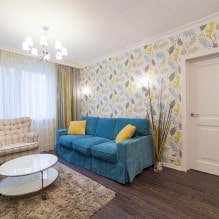

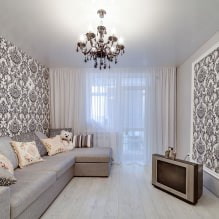

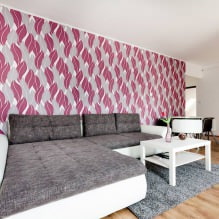
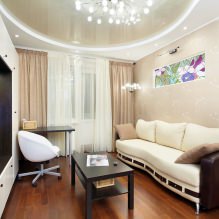
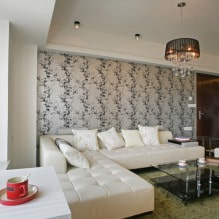
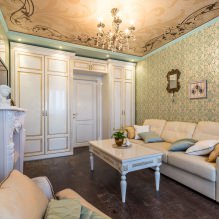

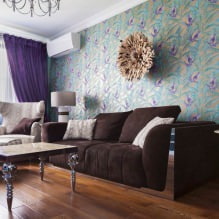
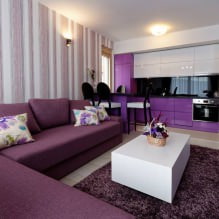
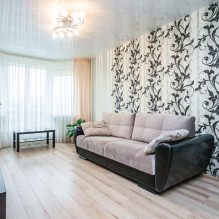
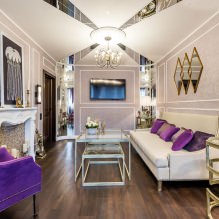
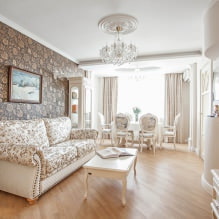
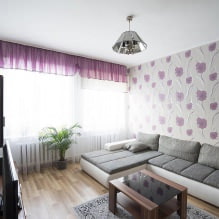
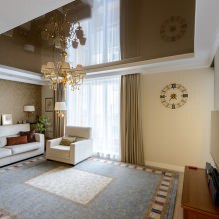
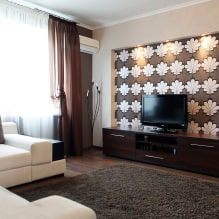
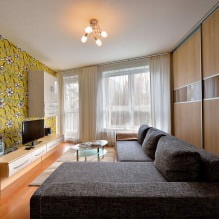
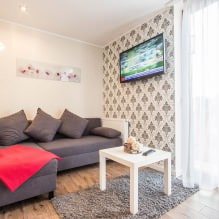


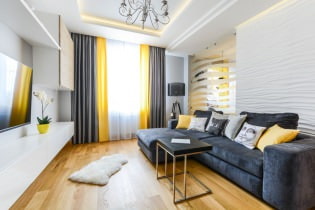 Choosing the best living room interior style: 88 photos and ideas
Choosing the best living room interior style: 88 photos and ideas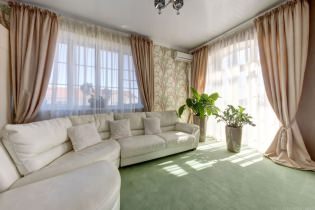 Curtains in the living room: 70 stylish photos of ideas in the interior
Curtains in the living room: 70 stylish photos of ideas in the interior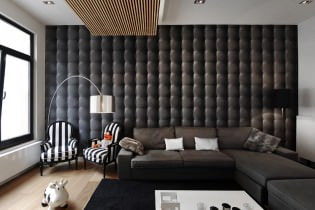 Wall decoration in the living room: choice of colors, finishes, accent wall in the interior
Wall decoration in the living room: choice of colors, finishes, accent wall in the interior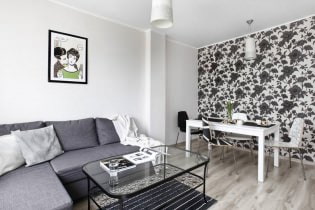 White and black and white wallpapers in the living room: 55 photos in the interior
White and black and white wallpapers in the living room: 55 photos in the interior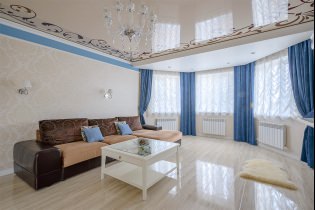 Stretch ceilings in the living room: views, design, lighting, 60 photos in the interior
Stretch ceilings in the living room: views, design, lighting, 60 photos in the interior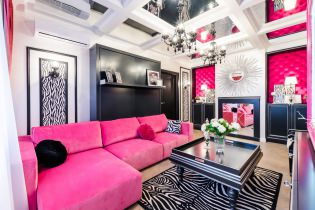 Pink living room design: 50 sample photos
Pink living room design: 50 sample photos